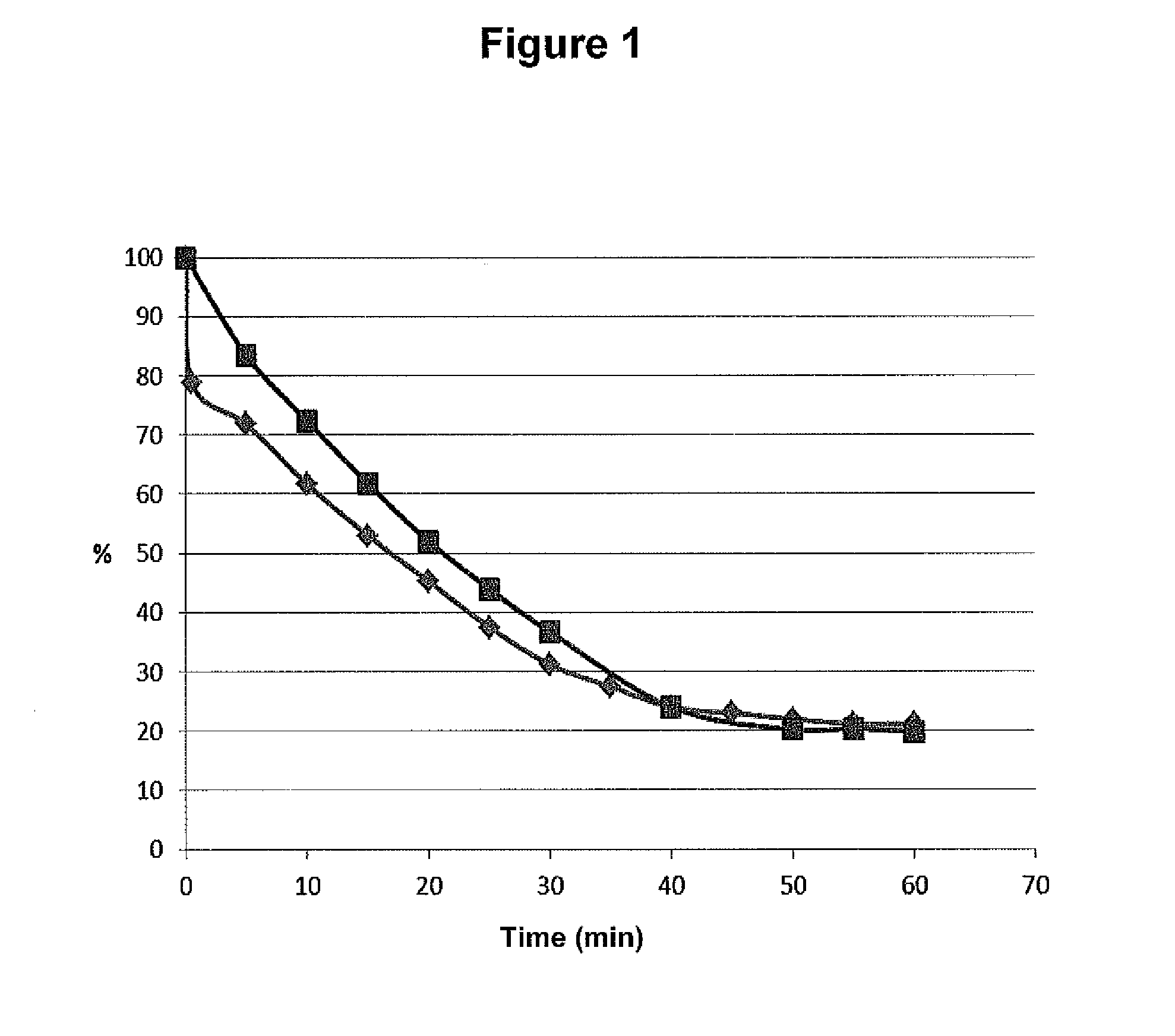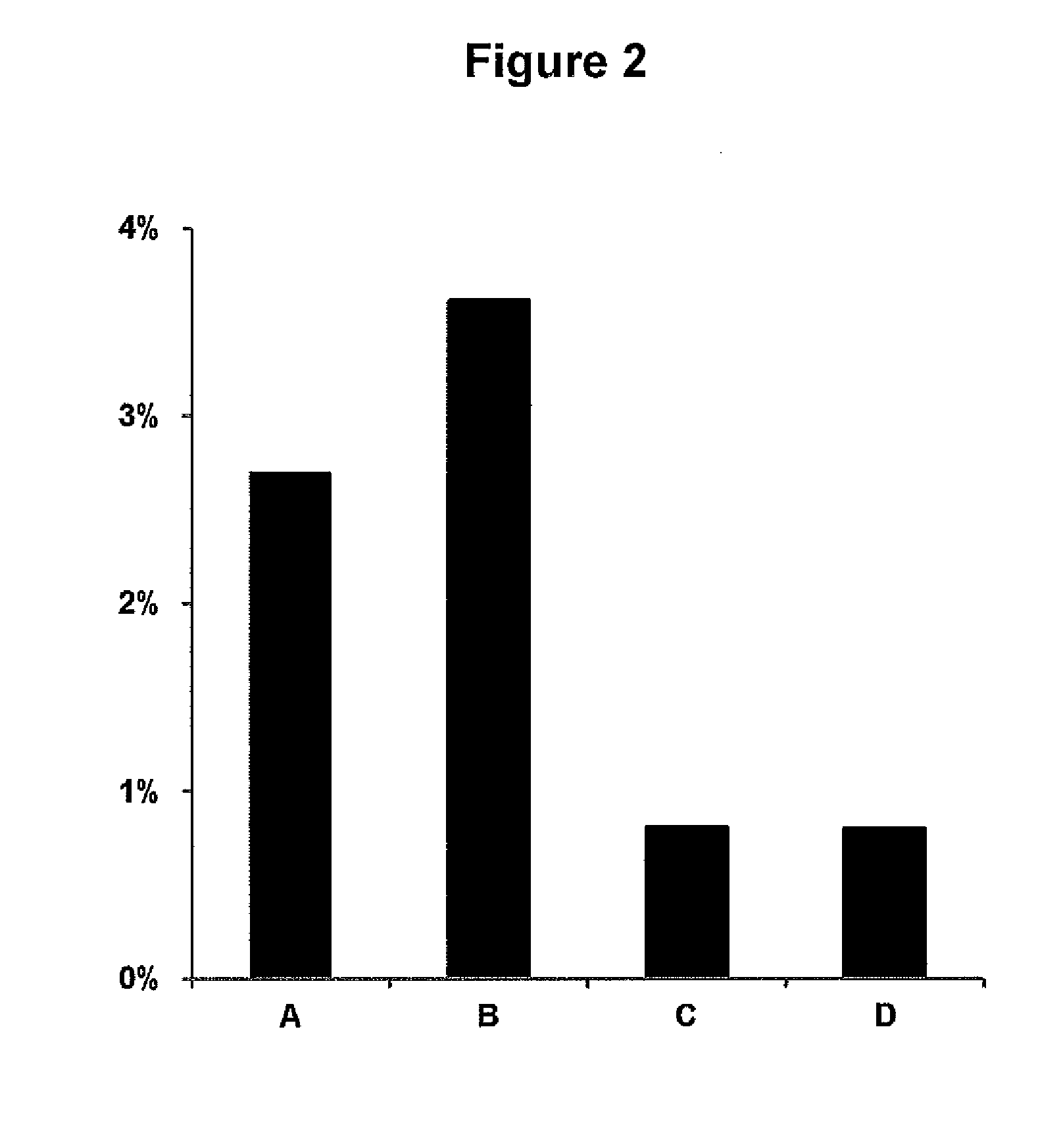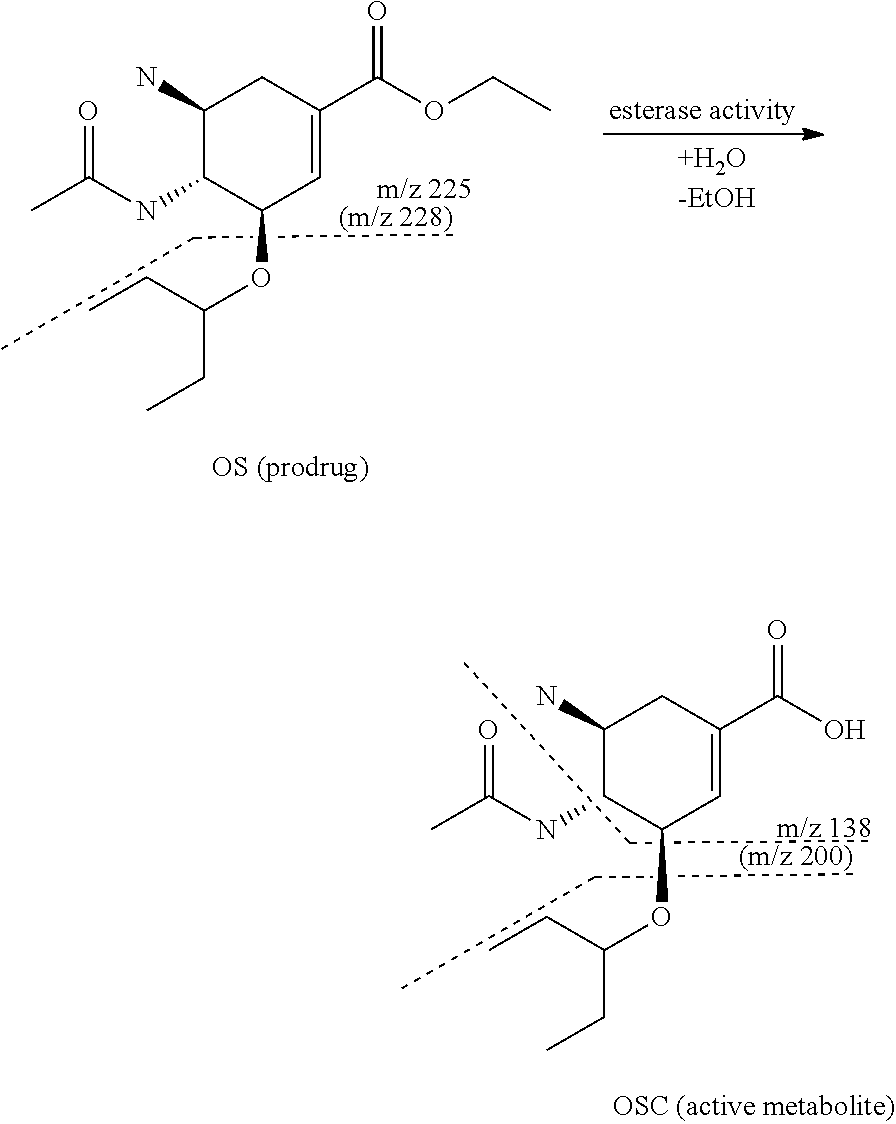Method for stabilization of fluid biological samples
a fluid biological and sample technology, applied in the direction of sampling, measurement devices, instruments, etc., can solve the problems of affecting the integrity of the dbs sample, the need for extended drying period of the sample after application on the filter paper, and the inability to achieve the effect of reducing the number of samples
- Summary
- Abstract
- Description
- Claims
- Application Information
AI Technical Summary
Benefits of technology
Problems solved by technology
Method used
Image
Examples
example 1
Drying Time of Blood Sample
[0097]The drying time on paper in room temperature of 25 μl stabilized blood sample (-♦-) and 25 μl un-stabilized blood sample (-▪-) was monitored by weighting the paper every 5 minute. The stabilization was performed by heating for 30 seconds using a Stabilizor™ System (Denator A B, Göteborg, Sweden). After approximately 50 minutes the paper did not loss more weight. End point blood dry matter was found to be about 21% of initial weight for both samples. Results are presented in FIG. 1.
example 2
Stabilization of Oseltamivir in Mouse Blood
[0098]Oseltamivir pharmacokinetics
[0099]Oseltamivir is an oral prodrug of oseltamivir carboxylate, a selective inhibitor of viral neuramidase glycoprotein in influenza A. Oseltamivir undergoes fast bioconversion to oseltamivir carboxylate mostly by carboxylesterase 1 (CES 1).
[0100]Dotted lines describe the fragmentation of the compounds during MRM measurement.
[0101]Mouse blood was spiked with oseltamivir, 500 ng / mL. 25 μL, blood was spotted on Whatman FTA DMPK-C card. Spot were left to dry at room temperature, or heat treated using a Stabilizor™ System (Denator A B, Göteborg, Sweden) then left to dry.
TABLE 1Stabilization of oseltamivir in mouse bloodTreatment% oseltamivir metabolizedDrying27Heating3
[0102]Results
[0103]Heat treatment of sample on paper strongly reduced the metabolism of the prodrug oseltamivir, compared to only passive drying of the sample.
example 3
Effect of Different Drying Conditions
[0104]Mouse blood was spiked with oseltamivir, 2000 ng / mL. 25 μL, blood was spotted on Whatman FTA DMPK-C card. Spots were allowed to dry under different conditions, with our without prior heat stabilization. Samples A were treated according to standard procedures according to manufacturer's instructions, i.e. dried in open air for 2 hrs. Samples B were dried in closed bags with silica. Samples C were heat stabilized and subsequently dried in open air. Samples D were heat stabilized and subsequently dried in closed bags with silica. Values in FIG. 2 showing % oseltamivir metabolized are mean of three samples.
[0105]Results
[0106]There is a significant lower amount of metabolized oseltamivir in samples which have been heat stabilized. Drying of samples not heat stabilized in closed bags with silica results in an even higher amount of metabolized oseltamivir. Drying of heat stabilized samples in closed bags with silica does not affect the amount of m...
PUM
| Property | Measurement | Unit |
|---|---|---|
| temperature | aaaaa | aaaaa |
| temperature | aaaaa | aaaaa |
| temperature | aaaaa | aaaaa |
Abstract
Description
Claims
Application Information
 Login to View More
Login to View More - R&D
- Intellectual Property
- Life Sciences
- Materials
- Tech Scout
- Unparalleled Data Quality
- Higher Quality Content
- 60% Fewer Hallucinations
Browse by: Latest US Patents, China's latest patents, Technical Efficacy Thesaurus, Application Domain, Technology Topic, Popular Technical Reports.
© 2025 PatSnap. All rights reserved.Legal|Privacy policy|Modern Slavery Act Transparency Statement|Sitemap|About US| Contact US: help@patsnap.com



